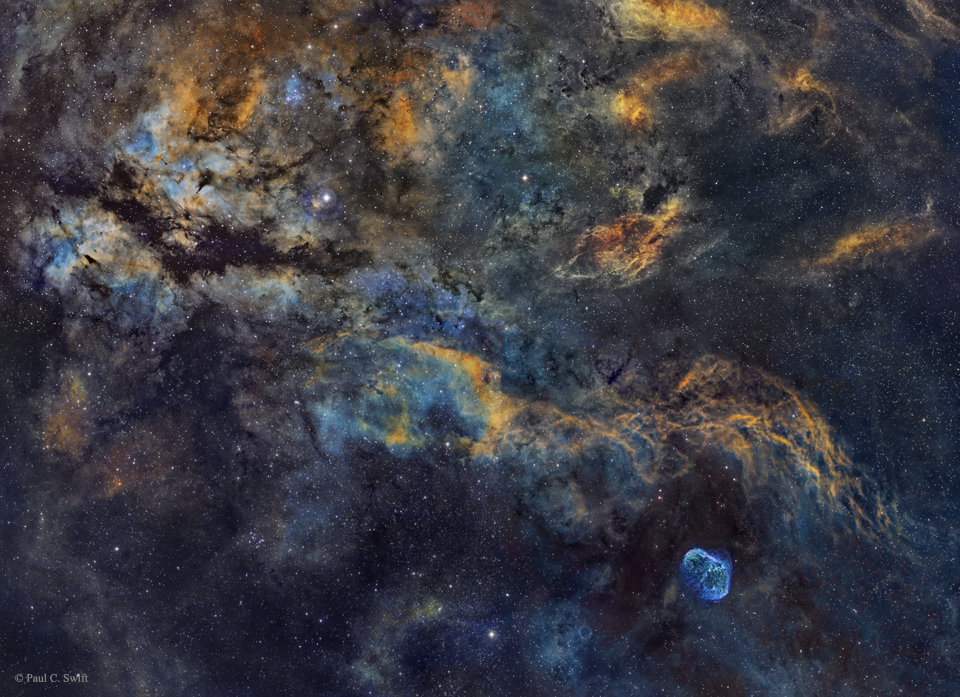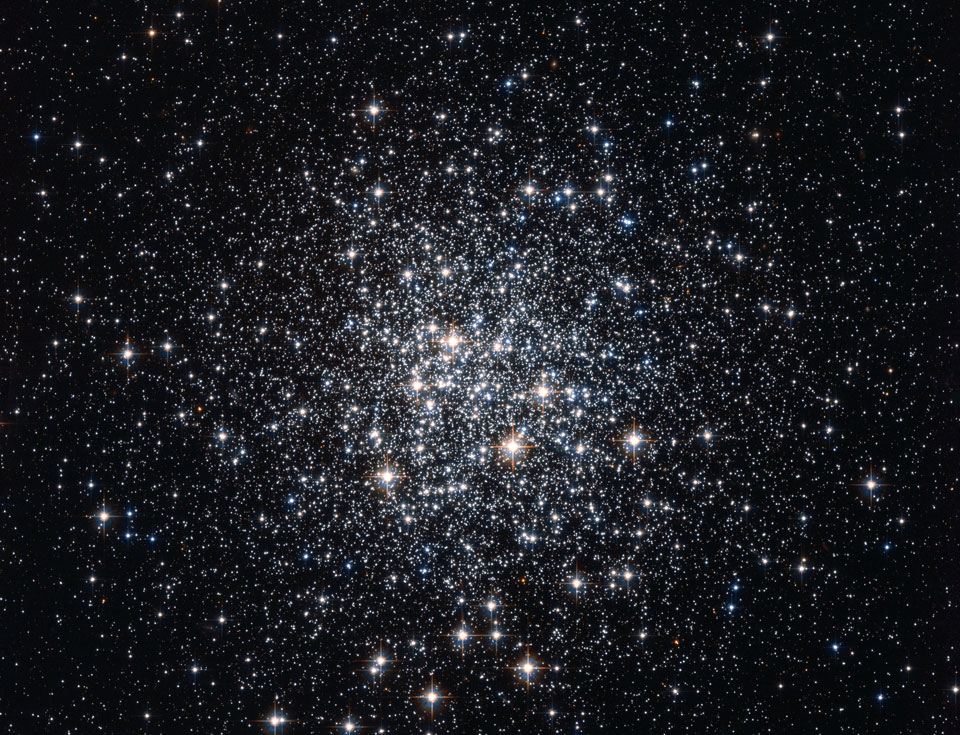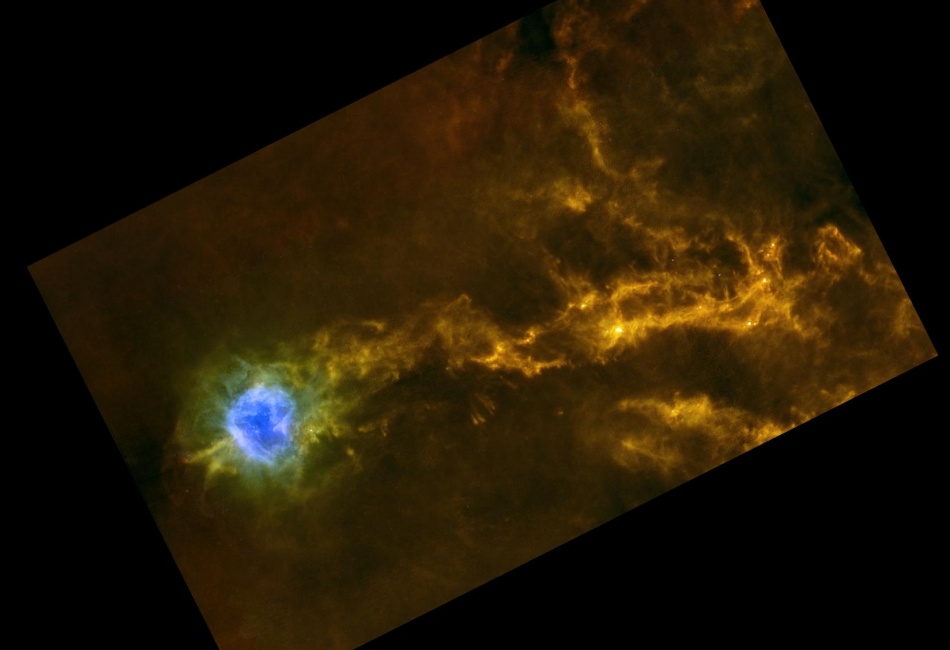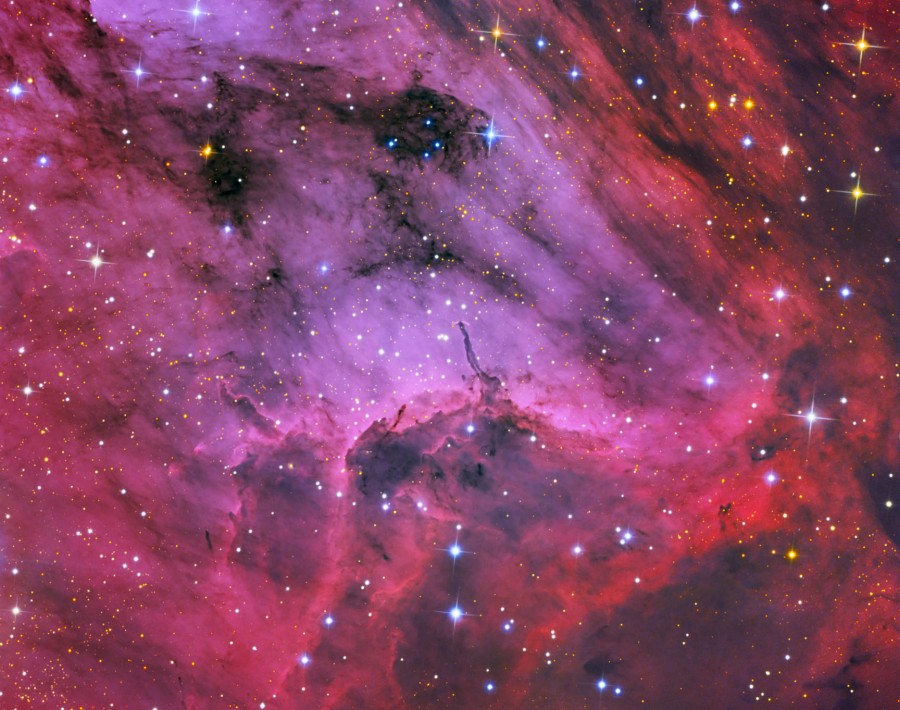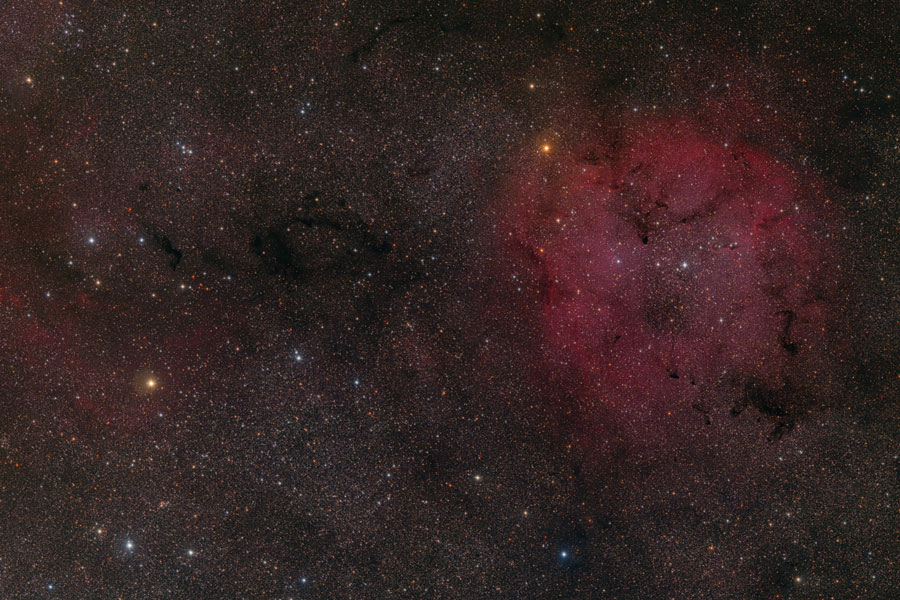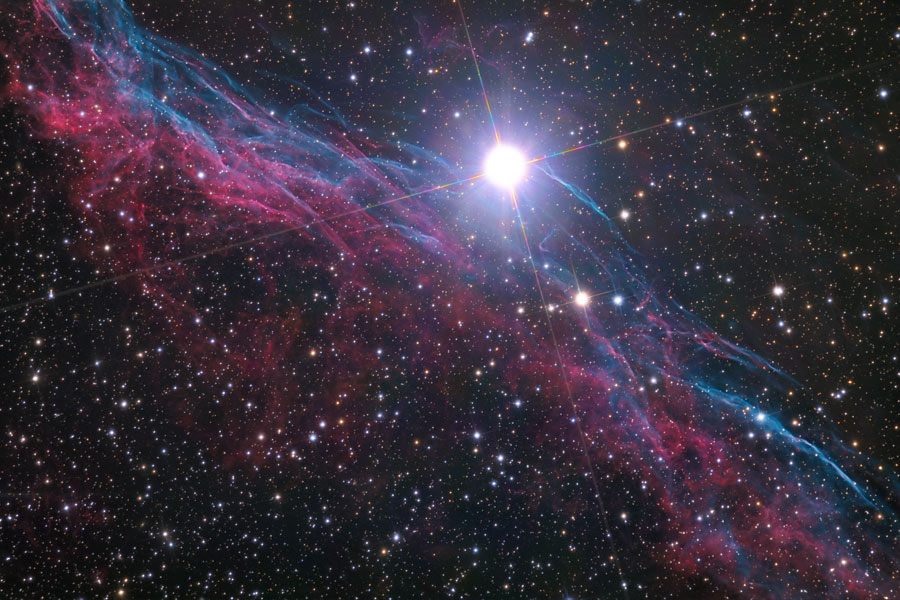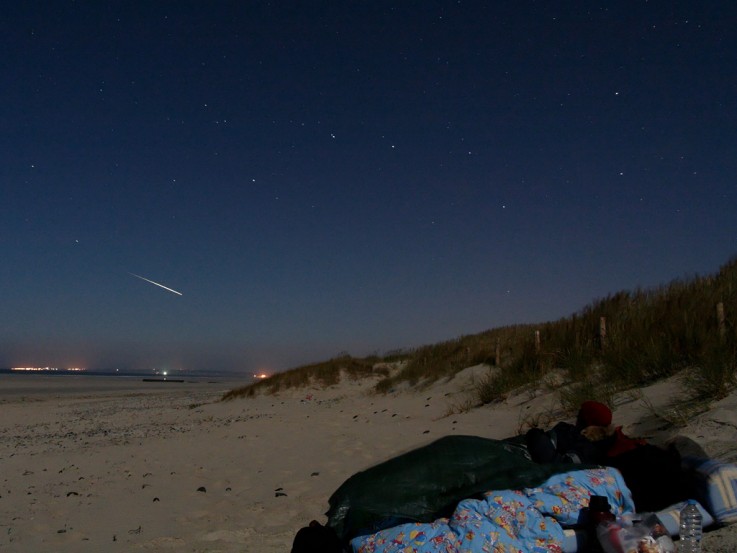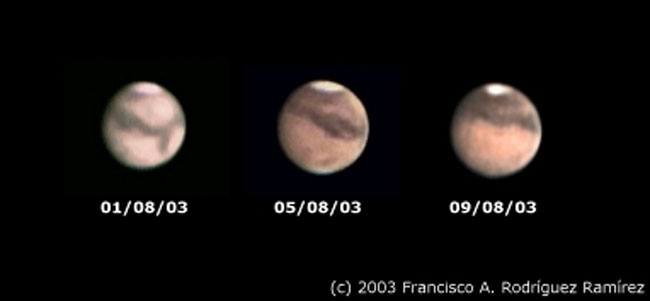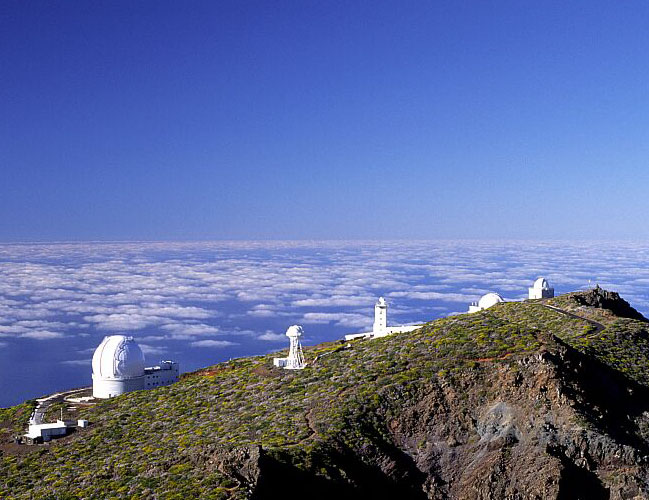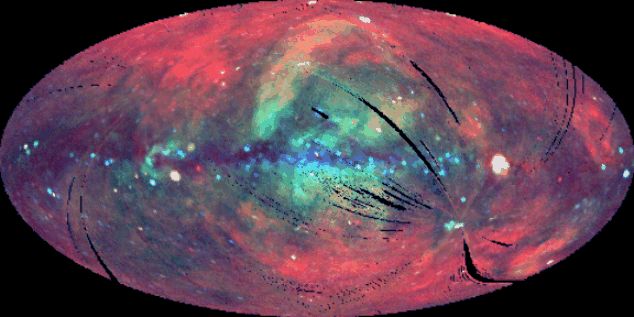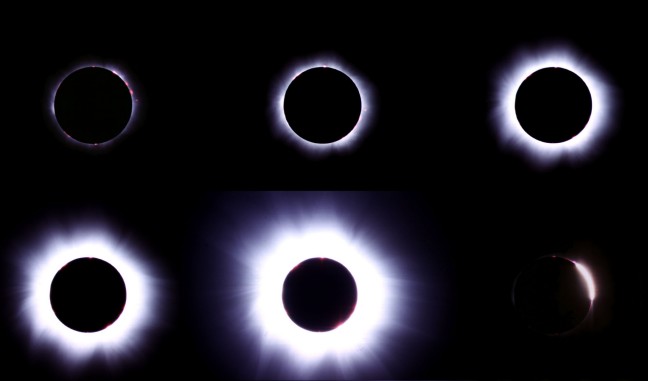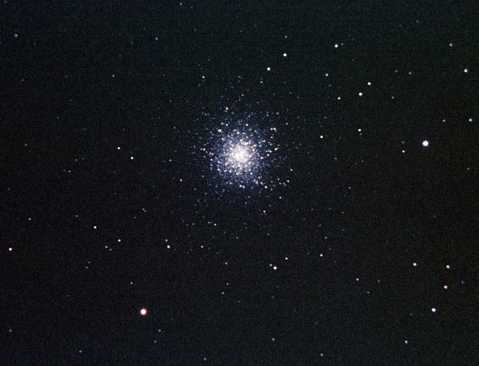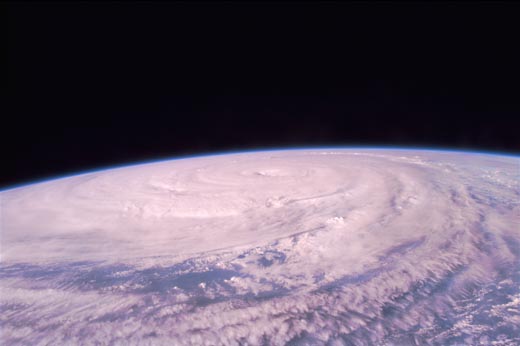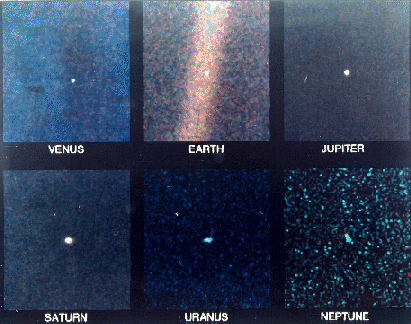| << Previous | Index | Next >> |
2015 In cosmic brush strokes of glowing hydrogen gas, this beautiful skyscape unfolds across the plane of our Milky Way Galaxy and the center of the northern constellation Cygnus the Swan. The featured image spans about six degrees. Bright supergiant star Gamma Cygni (Sadr) to the upper left of the image center lies in the foreground of the complex gas and dust clouds and crowded star fields. Left of Gamma Cygni, shaped like two luminous wings divided by a long dark dust lane is IC 1318, whose popular name is understandably the Butterfly Nebula. The more compact, bright nebula at the lower right is NGC 6888, the Crescent Nebula. Some distance estimates for Gamma Cygni place it at around 1,800 light-years while estimates for IC 1318 and NGC 6888 range from 2,000 to 5,000 light-years.
2014 Where should Philae land? As ESA's robotic spacecraft Rosetta circles toward Comet 67P/ Churyumov-Gerasimenko, a decision must eventually be made as to where its mechanical lander should attempt to touch-down. Reaching the comet earlier this month, Rosetta is sending back detailed pictures of the comet's unusual nucleus from which a smooth landing site will be selected. Pictured above, near the image top, the head of the comet's nucleus shows rugged grooves, while near the image bottom, the body shows a patch-work of areas sometimes separated by jagged hills. Some of the patch-work areas apparent on both the head and body seem to have fields of relatively smooth terrain. In the connecting area called the neck, however, visible across the image center, a relatively large swath of light-colored smooth terrain appears, punctuated occasionally by large boulders. Rosetta is scheduled to release Philae toward the dark mountain-sized comet nucleus with an anticipated landing date in November.
2013
Click to play embedded YouTube video.
Video Credit: Maciej Winiarczyk; Music: Jolanta Galka-Kurkowska
2012 Globular clusters once ruled the Milky Way. Back in the old days, back when our Galaxy first formed, perhaps thousands of globular clusters roamed our Galaxy. Today, there are less than 200 left. Many globular clusters were destroyed over the eons by repeated fateful encounters with each other or the Galactic center. Surviving relics are older than any Earth fossil, older than any other structures in our Galaxy, and limit the universe itself in raw age. There are few, if any, young globular clusters in our Milky Way Galaxy because conditions are not ripe for more to form. Pictured above by the Hubble Space Telescope are about 100,000 of M72's stars. M72, which spans about 50 light years and lies about 50,000 light years away, can be seen with a small telescope toward the constellation of the Water Bearer (Aquarius).
2011 In this remarkable infrared skyscape of interstellar clouds adrift in the high flying constellation Cygnus, the eye is drawn to the Cocoon Nebula. Also known as IC5146, the dusty star forming region is shown in blue hues in the Herschel Space Observatory false color image, at wavelengths more than 100 times longer than visible red light. And while visible light images show the Cocoon nebula at the end of long dark nebula Barnard 168, Hershel's infrared view finds the cosmic Cocoon punctuating a trail of filamentary clouds of glowing dust. The filaments have widths that suggest they are formed as shockwaves from exploding stars travel through the medium, sweeping up and compressing the interstellar dust and gas. Herschel data also indicate stars are forming along the dusty filaments. The Cocoon Nebula itself is about 15 light-years wide and 4,000 light-years away.
2010 The prominent ridge of emission featured in this vivid skyscape is designated IC 5067. Part of a larger emission nebula with a distinctive shape, popularly called The Pelican Nebula, the ridge spans about 10 light-years and follows the curve of the cosmic pelican's head and neck. Fantastic, dark shapes inhabiting the view are clouds of cool gas and dust sculpted by energetic radiation from hot, massive stars. But stars are also forming within the dark shapes. In fact, twin jets emerging from the tip of the central, dark tendril are the telltale signs of an embedded protostar cataloged as Herbig-Haro 555. The Pelican Nebula itself, also known as IC 5070, is about 2,000 light-years away. To find it, look northeast of bright star Deneb in the high flying constellation Cygnus.
2009 Sprawling across hundreds of light-years, emission nebula IC 1396, visible on the upper right, mixes glowing cosmic gas and dark dust clouds. Stars are forming in this area, only about 3,000 light-years from Earth. This wide angle view also captures surrounding emission and absorption nebula. The red glow in IC 1396 and across the image is created by cosmic hydrogen gas recapturing electrons knocked away by energetic starlight. The dark dust clouds are dense groups of smoke-like particles common in the disks of spiral galaxies. Among the intriguing dark shapes within IC 1396, the winding Elephant's Trunk nebula lies just right of the nebula's center. IC 1396 lies in the high and far off constellation of Cepheus.
2008 Ten thousand years ago, before the dawn of recorded human history, a new light must suddenly have appeared in the night sky and faded after a few weeks. Today we know this light was an exploding star and record the colorful expanding cloud as the Veil Nebula. Pictured above is the west end of the Veil Nebula known technically as NGC 6960 but less formally as the Witch's Broom Nebula. The expanding debris cloud gains its colors by sweeping up and exciting existing nearby gas. The supernova remnant lies about 1400 light-years away towards the constellation of Cygnus. This Witch's Broom actually spans over three times the angular size of the full Moon. The bright star 52 Cygni is visible with the unaided eye from a dark location but unrelated to the ancient supernova.
2007 Is this what a sonic boom looks like? When an airplane travels at a speed faster than sound, density waves of sound emitted by the plane cannot precede the plane, and so accumulate in a cone behind the plane. When this shock wave passes, a listener hears all at once the sound emitted over a longer period: a sonic boom. As a plane accelerates to just break the sound barrier, however, an unusual cloud might form. The origin of this cloud is still debated. A leading theory is that a drop in air pressure at the plane described by the Prandtl-Glauert Singularity occurs so that moist air condenses there to form water droplets. Above, an F/A-18 Hornet was photographed just as it broke the sound barrier. Large meteors and the space shuttle frequently produce audible sonic booms before they are slowed below sound speed by the Earth's atmosphere.
2006 To paraphrase Magritte, "This is not a meteor". It's not a picture of a meteor either, but it was taken during last weekend's peak of the Perseid Meteor shower. Skywatching with friends at a cosy beach campsite bathed in moonlight at Treguennec, France, astronomer and APOD translator Laurent Laveder planned to record bright Perseid meteors with camera and tripod. While the Perseid meteors he saw were neither numerous nor bright he did capture the brilliant trail of an Iridium communication satellite. His long exposure began after the satellite glint became visible, so the resulting streak does resemble a meteor trail in the final image. Also recognizable in the serene view of sandy beach and starry sky is the famous northern asterism, the Big Dipper.
2005 Beautiful nebulae, clusters, and galaxies that grace planet Earth's night sky are often known by their New General Catalog designation or NGC number. That classic listing was compiled by John Louis Emil Dreyer, remarkable director of the Armagh Observatory from 1882 to 1916. NGC 2266 is, for example, the 2,266th item in his New General Catalog of Nebulae and Clusters of Stars. Noting that "every book has a first page", modern day astronomer Jay GaBany wondered what NGC 1 might look like - and found it, along with NGC 2 in the constellation Pegasus. Pictured above, both are more or less typical-sized (50-100 thousand light-years across) spiral galaxies with estimated distances of over 150 million light-years for NGC 1 (top) and about twice that for NGC 2. NGC ordering is based on an astronomical coordinate system, so these otherwise unremarkable spirals appear first in the NGC listing because their location in the sky translates to the smallest Right Ascension coordinate in the catalog.
2004 A fast and powerful wind from a hot young star has created this stunning bubble-shaped nebula poised on the end of a bright filament of hydrogen gas. Cataloged as N44F, the cosmic windblown bubble is seen at the left of this Hubble Space Telescope image. N44F lies along the northern outskirts of the N44 complex of emission nebulae in the Large Magellanic Cloud, a mere 160,000 light-years away. The bright, blue, hot star itself is just below the center of the bubble. Peering into the bubble's interior, the Hubble image reveals dramatic structures, including pillars of dust, aligned toward N44F's hot central star. Reminiscent of dust pillars in stellar nurseries within our Milky Way galaxy, they likely contain young stars at their tips. Expanding into the surrounding gas and dust at about 12 kilometers per second, N44F is around 35 light-years across.
2003 How does Mars appear through a small telescope? Viewed with the unaided eye or through a small telescope, possibly the most striking part of Mars' appearance is its red color. The color derives from rust, iron oxide, which composes perhaps 10% of the Martian soil. The oxygen that rusts the surface iron on Mars originates predominantly from carbon dioxide gas, which composes 95% of the Martian atmosphere. Mars nears its closest approach with Earth in nearly 60 millennia on August 27, the red planet continues to appear larger, brighter, and a good target for sky enthusiasts. Pictured above, Mars was captured from the Canary Islands of Spain during three days in three different orientations earlier this month. Visible through the small telescope are white polar caps of water and carbon-dioxide ice, light red areas rich in lightly colored craters, and dark red areas dominated by relatively smooth lowlands.
2002 Above the clouds, atop an island off the coast of Africa, a group of cutting-edge telescopes inspects the universe. Pictured above are telescopes at Roque de los Muchachos Observatory on La Palma, one of the Canary Islands, Spain. The site is one of the premier observing locations on Earth. The telescopes pictured are, from left to right, the Carlsberg Meridian Telescope, the 4.2-meter William Herschel Telescope, the Dutch Open Telescope, the Swedish Solar Tower, the 2.5-meter Isaac Newton Telescope, and the 1.0-meter Jacobus Kapteyn Telescope. Pioneering observations made recently by these telescopes include stars and galaxies forming early in our universe, comets breaking up, and evidence for planets around Sun-like stars.
2001 Mercury's surface looks similar to our Moon's. Each is heavily cratered and made of rock. Mercury's diameter is about 4800 km, while the Moon's is slightly less at about 3500 km (compared with about 12,700 km for the Earth). But Mercury is unique in many ways. Mercury is the closest planet to the Sun, orbiting at about 1/3 the radius of the Earth's orbit. As Mercury slowly rotates, its surface temperature varies from an unbearably cold -180 degrees Celsius to an unbearably hot 400 degrees Celsius. The place nearest the Sun in Mercury's orbit changes slightly each orbit - a fact used by Albert Einstein to help verify the correctness of his then newly discovered theory of gravity: General Relativity. The above picture was taken by the only spacecraft ever to pass Mercury: Mariner 10 in 1974.
2000 Launched in 1990, the orbiting ROSAT observatory explored the Universe by viewing the entire sky in x-rays -- photons with about 1,000 times more energy than visible light. This ROSAT survey produced the sharpest, most sensitive image of the x-ray sky to date. The all-sky image is shown with the plane of our Milky Way Galaxy running horizontally through the center. Both x-ray brightness and relative energy are represented with red, green, and blue colors indicating three x-ray energy ranges (from lowest to highest). Bright x-ray spots near the galactic plane are within our own Milky Way. The brightest region (right of center) is toward the Vela Pulsar and the Puppis supernova remnant. Bright sources beyond our Galaxy are also apparent, notably the Virgo cluster of galaxies (near top right) and the Large Magellanic Cloud (LMC). The LMC is easy to find here as several of the black stripes (blank areas caused by missing data) seem to converge on its position (lower right). Over large areas of the sky a general diffuse background of x-rays dominates. Hot gas in our own Galaxy provides much of this background and gives rise to the grand looping structures visible in the direction of the galactic center (image center). Unresolved extragalactic sources also add to this background, particularly above and below the plane. Despite the x-ray sky's exotic appearance, a very familiar feature is visible - the gas and dust clouds which line the plane of our galaxy absorb x-rays as well as optical light and produce the dark bands running through the galactic center.
1999 Only in the fleeting darkness of a total solar eclipse is the light of the solar corona easily visible from Earth. Normally overwhelmed by the bright solar disk, the expansive corona, the sun's outer atmosphere, is an alluring sight. But the subtle details and extreme ranges in the corona's brightness discernible to the eye are notoriously difficult to photograph. In this series of images recorded from Siofok, Hungary during the total phase of the August 11 eclipse, progressively longer exposures (top left to bottom center) have been used to more faithfully capture different regions of the elusive solar corona. The final image (at bottom right) shows light from the solar disk emerging from behind the moon's edge at the end of totality.
1998 M13 is one of the most prominent and best known globular clusters. Visible with binoculars in the constellation of Hercules, M13 is frequently one of the first steps beyond the ordinary visible to the casual sky gazer. M13 is a colossal home to over 100,000 stars, spans over 150 light years across, lies over 20,000 light years distant, and is over 12 billion years old. At the 1974 dedication of Arecibo Observatory, a radio message about Earth was sent in the direction of M13. The reason for the low abundance of unusual blue straggler stars in M13 is currently unknown.
1997 Super Typhoon Winnie raged through parts of the Eastern Hemisphere last week. Swirling in the Pacific Ocean with winds in excess of 160 miler per hour, Winnie became one of the stronger storm systems in modern times: a Category 5 Hurricane. The above picture, taken August 13th by crew member of Space Shuttle Discovery, showed the extent of this huge storm: the central eye measured fully 8 miles in diameter. Last week, Winnie hit the Northern Mariana Islands at full strength, but then weakened before heading toward China. Studying large storms systems on other planets give insight into the workings of Earth bound storms like Winnie.
1996 Welcome to Planet Earth, the third planet from a star named the Sun. The Earth is shaped like a sphere and composed mostly of rock. Over 70 percent of the Earth's surface is water. The planet has a relatively thin atmosphere composed mostly of nitrogen and oxygen. Earth has a single large Moon which is about 1/4 of its diameter and, from the planet's surface, is seen to have almost exactly the same angular size as the Sun. With its abundance of liquid water, Earth supports a large variety of life forms, including potentially intelligent species such as dolphins and humans. Please enjoy your stay on Planet Earth.
1995 After taking its spectacular pictures of the outer solar system planets, Voyager 1 looked back at six planets from the inner solar system. Here Venus, Earth, Jupiter, Saturn, Uranus, and Neptune, were all visible across the sky. Each, however, was now just a small speck of light, dimmer than many of the stars in the sky. Voyager 1 is only one of four human-made objects to leave our Solar System, the other three being Voyager 2, and Pioneer 10 and 11.
| << Previous | Index | Next >> |
